Do you have a question about the Panasonic KX-TGFA97 and is the answer not in the manual?
Details product configurations, part numbers, and quantities for different models.
Lists all supplied accessories with their respective part numbers and quantities.
Explains the meaning and significance of various symbols displayed on the product.
Provides critical warnings and precautions for safe product operation and handling.
Outlines essential guidelines for safe operation, maintenance, and usage.
Discusses potential effects of RF energy on medical devices like pacemakers and hearing aids.
Specifies correct installation practices and suitable placement guidelines to avoid hazards.
Details battery usage recommendations, types, and crucial safety precautions.
Lists fundamental safety precautions to reduce the risk of fire, shock, and injury.
Advises on optimal base unit placement and environmental conditions for best reception.
Provides instructions for cleaning and maintaining the product's external surfaces.
Covers nameplate location, disposal notices, and product identification.
Advises on erasing personal data before disposing of, transferring, or returning the product.
Lists technical details including Bluetooth standards, frequency ranges, and power consumption.
Guides through connecting the base unit, charger, and installing batteries.
Shows the procedure for safely removing the handset battery.
Explains how to charge handset batteries and indicates charging status indicators.
Provides important notes regarding connections, battery installation, and charging.
Details the expected operating time for the supplied Ni-MH batteries.
Explains the power-saving feature that reduces handset transmission power.
Explains the meaning of various icons and indicators on handset and base unit displays.
Covers changing display language and voice announcement language settings.
Guides on setting the current date and time for accurate feature operation.
Explains how to record a personalized greeting for the answering system.
Covers settings like dialing mode and low battery alerts for the unit.
Identifies and explains the buttons, features, and indicators on the handset.
Identifies and explains the buttons, features, and indicators on the base unit.
Explains connecting the base unit and cellular phone via Bluetooth for making/answering calls.
Provides step-by-step instructions for pairing a cellular phone to the base unit.
Details how to cancel the pairing of a cellular phone from the base unit.
Covers settings for selecting which unit receives cellular calls and ring modes.
Explains automatic reconnection of paired Bluetooth devices to the base unit.
Describes how to manually connect or disconnect a paired cellular phone.
Guides on setting the unit to use only cellular lines, disconnecting the landline.
Determines which cellular line is used for outgoing calls from the unit.
Instructions for changing the Bluetooth PIN for security and access.
Instructions for making calls using a connected cellular phone via the handset.
Instructions for making calls using the landline connection via the handset.
How to answer incoming landline or cellular calls using the handset.
Covers call management features like Hold, Mute, and Noise Reduction.
How to record conversations during landline calls using the handset.
Guides on transferring calls and setting up conference calls between units or with outside parties.
How to handle a second incoming call while on an active call.
Explains how the unit functions during a power failure using handset battery.
Instructions for making calls using a connected cellular phone from the base unit.
Instructions for making calls using the landline connection from the base unit.
How to answer incoming landline or cellular calls using the base unit.
Covers call management features like Hold, Mute, and Flash for the base unit.
How to record conversations during landline calls using the base unit.
Allows joining an existing outside call using the base unit.
Guides on transferring calls and setting up conference calls via the base unit.
How to handle a second incoming call while on an active call using the base unit.
Explains the feature that answers calls automatically using voice detection.
Instructions to enable or disable the voice command answering feature.
How to adjust the sensitivity for voice detection to trigger the feature.
Steps to answer calls using voice command on the handset or base unit.
Explains how to make intercom calls between handsets and the base unit.
Step-by-step guide to initiate an intercom call from handset or base unit.
How to answer an incoming intercom call on handset or base unit.
Enables automatic answering of intercom calls, also affecting baby monitor.
Explains blocking calls using pre-installed or manual lists of numbers.
How to store numbers or ranges to block incoming calls effectively.
How the unit blocks calls based on stored entries, preventing ringing.
Instructions for storing individual phone numbers for blocking unwanted callers.
How to add numbers from the caller list to the block list for blocking.
Instructions for manually adding phone numbers to the block list.
How to block calls based on specified number ranges.
How to block calls with unknown or private numbers effectively.
Controls whether the first ring is heard for blocked calls or all calls.
Managing existing entries in the call block list, including editing and unblocking.
How to remove all entries from the call block list at once.
Viewing and resetting the count of blocked calls for tracking purposes.
Screens calls by playing a greeting and requiring an access code for identification.
Stores numbers that have passed automated call block for easier future access without codes.
How to enable or disable the automated call block feature on the unit.
Instructions for changing the access code used for automated call block security.
Allows specific callers to bypass screening by matching their names to the list.
Feature to screen telemarketing calls by asking callers to state their names.
Detects and alerts about potential scam calls based on the number of rings.
Configures how many rings trigger the scam alert notification.
Explains how to add, store, organize contacts with groups, and manage entries.
Step-by-step guide to add new contacts, including name, number, and group assignment.
How to input names and numbers using the dial keys and character entry methods.
How to save numbers from the redial list directly into the phonebook.
How to save incoming call numbers directly to the phonebook for future reference.
Organizes contacts into groups for efficient management and Caller ID identification.
Methods to locate contacts and make calls directly from the phonebook.
How to modify existing phonebook entries, including names, numbers, and groups.
How to delete individual or all phonebook entries and manage the list.
Dials phone numbers from the phonebook while on an active call, useful for access numbers.
Assigning phone numbers to dial keys for quick access to frequently called contacts.
Step-by-step guide to set up speed dial entries for rapid dialing.
Explains two methods to access features: scrolling through menus or using direct command codes.
Provides a table of operations, codes, and reference pages for programming settings.
Settings related to greeting messages for the answering system, including recording and playback.
Settings for alerts when new messages are received, including call notifications.
General system settings like ring counts, recording time, remote codes, and display contrast.
Main menu for managing and configuring Bluetooth devices like cell phones and headsets.
Settings for managing cell phone connections, ringer volume, alerts, and line selection.
Settings for pairing, connecting, and managing Bluetooth headsets.
Various system settings including ring adjustments, silent mode, and talking caller ID.
Schedule quiet periods when the unit will not ring for calls, with group bypass options.
Feature to monitor sounds from another room, with options for remote monitoring.
Instructions for registering additional handsets or other compatible units to the base unit.
Explains the prerequisites and basic functionality of Caller ID for identifying incoming callers.
Details how caller information is displayed and interprets specific messages like 'Out of area'.
How the unit treats and displays calls that were not answered by any unit.
How stored names from the phonebook appear with incoming calls for easier identification.
Announces caller names or numbers for hands-free identification of incoming calls.
Information about the list of received calls and its importance for tracking.
How to review the caller list and initiate calls directly from it.
How to modify phone numbers in the caller list, such as removing area codes.
Automatically adjusts caller number format based on previous calls for consistency.
How to delete specific entries from the caller list individually.
How to clear the entire caller list of all received call records.
Guides on transferring contact lists from a cellular phone to the unit's phonebook.
Information about the app for integrating Android phones with the DECT phone for alerts and settings.
Alerts on the DECT phone when the paired cellular phone receives SMS messages.
General settings for alerts received from the cellular phone, including display and voice options.
Operate cellular phone voice recognition features (Siri/Google Assistant) from the handset or base unit.
Step-by-step instructions to activate voice assist for controlling the cellular phone.
How to use a Bluetooth headset for hands-free conversations on landline calls.
Essential steps for pairing a Bluetooth headset with the base unit for connectivity.
How to connect or disconnect a paired headset from the base unit.
How to cancel a headset's pairing from the base unit.
Steps for making and answering landline calls using the Bluetooth headset.
Allows sharing calls between the Bluetooth headset and the handset.
How to switch audio output between the base unit and the headset.
Explains the answering system's function to answer and record calls when unavailable.
How to enable or disable the answering system functionality.
Explains that a greeting message is played to callers before recording.
Step-by-step guide to record a personalized greeting message.
How to access and listen to recorded messages via handset or base unit.
Lists controls available while listening to messages, like volume and playback options.
How to call back callers directly from the message playback interface.
How to delete all recorded messages from the answering system.
Features for being notified of new messages, including audible alerts and call alerts.
Unit calls a specified number to notify of new messages, allowing remote access.
How to operate the answering system remotely via phone using touch-tone commands.
Explains the purpose and default setting of the remote access code for security.
Steps to access and control the answering system from an external phone.
Configuration options for call screening, ring counts, and other system behaviors.
Allows listening to callers live while they leave messages, with volume adjustment.
Setting the number of rings before the answering system activates, including Toll saver option.
Adjusts the maximum recording time allowed per caller for messages.
Sets the unit to play a greeting but not record messages, asking callers to call again.
Information on using voicemail service from the phone provider and its interaction with the unit's system.
How to store the voicemail access number for automatic dialing and access.
Explains how the unit detects voicemail tones and how to manage this detection feature.
How to listen to voicemail messages via the unit or by calling from outside.
Instructions for mounting the base unit on a wall using the provided adaptor.
Lists common error messages displayed by the unit and their corresponding causes and solutions.
General troubleshooting tips for common problems with the unit, including connection and operation issues.
Compliance information with FCC rules and requirements for radio frequency devices.
Information regarding RF exposure limits and safe operating distances for the product.
Information about compatibility with T-Coil equipped hearing aids and cochlear implants.
Information on where to find support, accessories, manuals, and dealer information.
Details the warranty coverage, terms, and conditions for products purchased and serviced in the USA.
| Brand | Panasonic |
|---|---|
| Model | KX-TGFA97 |
| Category | Cordless Telephone |
| Language | English |
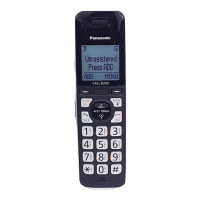

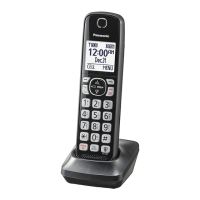
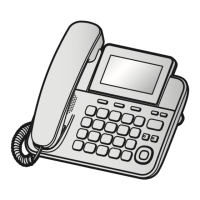
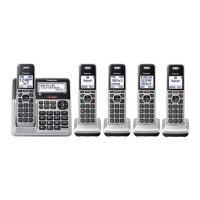
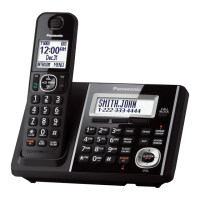

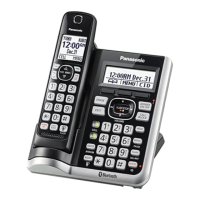

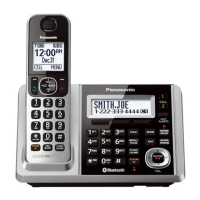
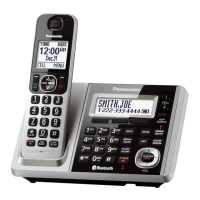
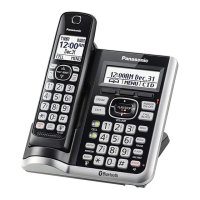
